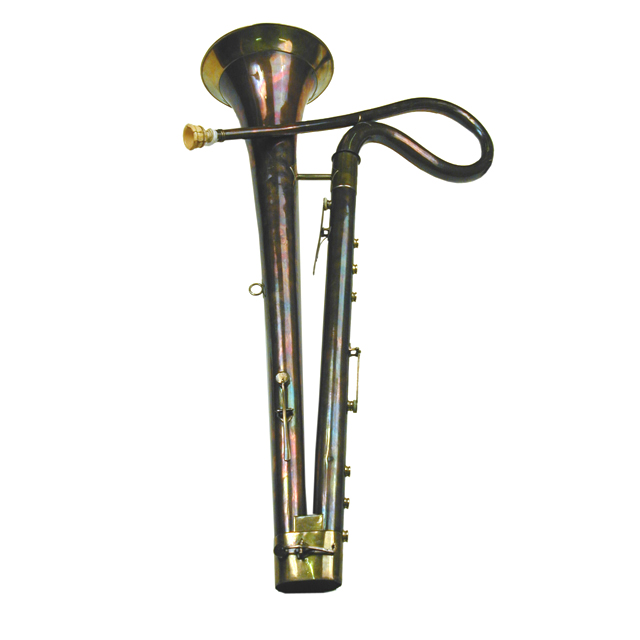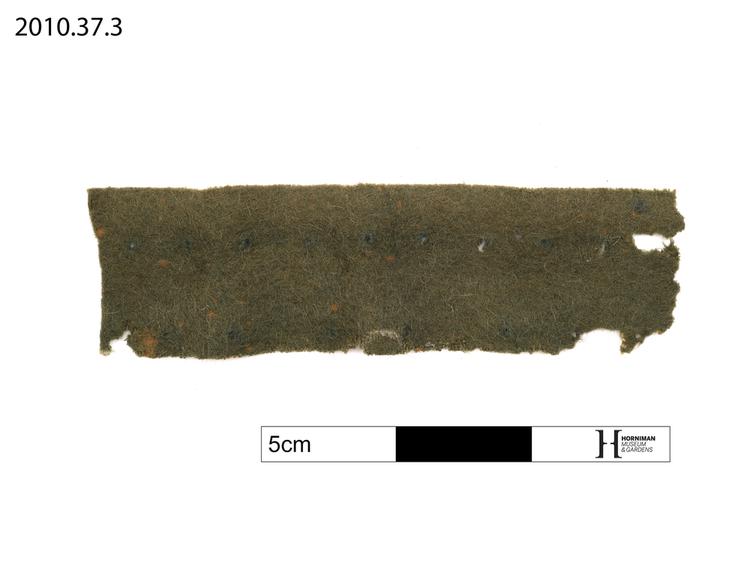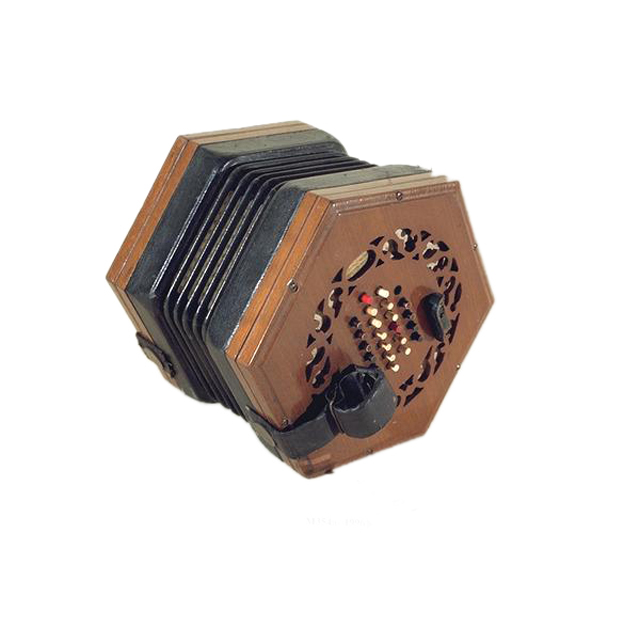
Shady grove plantation trumpet made from an organ pipe.
Horn-blowing has been a tradition at the Shady Grove Camp Ground, an African-American camp in South Carolina, since the mid 1800s. Shell Johnson was the horn-blower at the camp in 1991 when Craig Kridel, a professor at the University of South Carolina visited. Shell Johnson was the fourth trumpeter at the camp and had started playing the trumpet in the October after Hurricane Gracie on September 29 1959. The horn or trumpet’s function at religious camp meetings was to signal the occurrence of certain events to those in the immediate and surrounding areas. Horn or trumpet blowing occurred throughout the day signalling different prayer times as well as wake-up and lights out and all meal times. Shell Johnson had been borrowing the Indian Field Campground ‘plantation trumpet’ (as named by Shell Johnson), however, when Craig Kridel visited in 1991 he decided that Shell Johnson should have his own trumpet. The Indian Field Campground trumpet was made from a former organ pipe, so Craig Kridel bought eight organ pipes and commissioned Professor Michael Swinger, an art historian at the Columbus College of Art and Design (Ohio) and a former organ builder, to adapt the organ pipes into eight ‘plantation trumpets’. These were then presented to Shell Johnson at the October 1992 camp meeting. He tested them all out during the course of the week for the traditional setting-to sound trumpet calls and then selected the red-bore trumpet as his instrument of choice. The remaining seven horns have been donated to musical instrument collections throughout the United States and Europe including 2013.166 at the Horniman Museum and Gardens.






